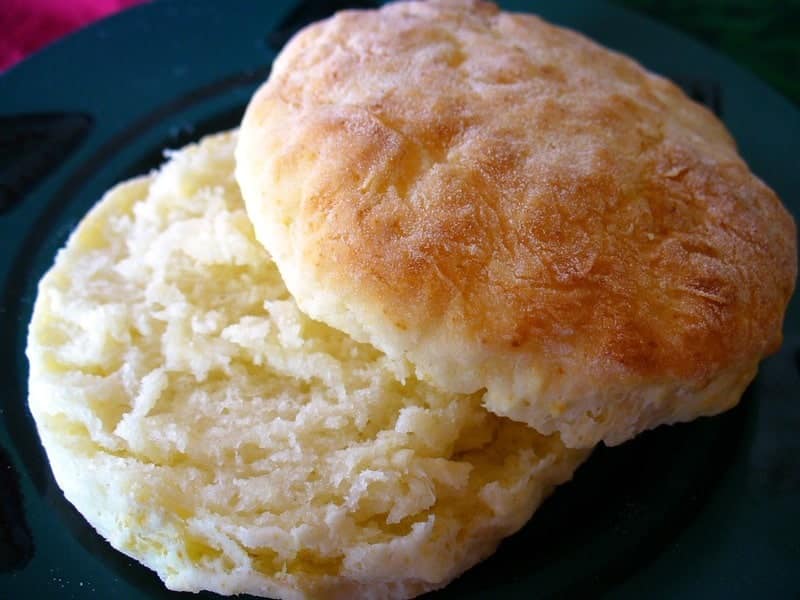How to Tell if Sour Cream is Bad
Sour cream is made from pasteurized milk. After pasteurization, healthy bacteria are added to ferment the milk.
The fermentation creates lactic acid, which gives the cream its characteristic mild tang.
Although people have cooked with fermented cream for centuries, sour cream as Americans know it was brought to the US by Eastern and Central European immigrants in the 19th century.
Sour cream adds richness to soups and stews like beet borscht and Hungarian goulash. But it curdles when boiled, so the wise cook just stirs it in the last few minutes of cooking.
Salad dressing and sauces for vegetables are made richer with the addition of sour cream. And many recipes for baked goods, like cheesecake, cookies and savory pastries, call for sour cream.
Full-fat, light and fat-free sour creams are widely available for sale. The light version has 50% less fat than full-cream.
The fat-free version is artificially thickened with vegetable gum. It isn’t suitable for cooking and baking, although it can be used to top a baked potato or as a cold dip.
The shelf life of full-fat and reduced-fat sour cream is the same.
An unopened package of sour cream will keep one to weeks after its “best used by” date. Exactly how long it stays edible depends on how well it’s been stored.
The “sell by” date informs the store how long it should display the sour cream for sale, according to the U.S. Department of Agriculture.
Consumers should purchase sour cream before the “sell by” date.
“Best if used by” indicates when the sour cream will be of the best quality and taste its best.
The “use by” date is the last date that the sour cream should be consumed. Both the USDA and the Food and Drug Administration recommend that consumers follow the “use by” date on sour cream.
If kept in the refrigerator at 40° F or colder, an unopened package can be used one to two weeks past the “sell-by” date. But it’s always worth checking for freshness after the “sell by” date.
If stored in the door of the refrigerator, where it’s least cold, it may go bad after one week past the “sell-by” date.
Once the package has been opened, the leftover sour cream will last about two weeks, if kept tightly covered in the refrigerator’s coldest spot.
Kept out at room temperature above 40° F, sour cream will spoil after two hours, no matter what dates the package label bears.
So you have some sour cream lurking in the fridge and are wondering if it’s still safe to eat. Look for these signs of spoilage before tasting it.

- The sour cream has an off smell. If it smells moldy, rancid, or unpleasant, it is spoiled.
- There are colored spots on the surface of the cream or in the neck of the container – that’s mold. Mold can be blue/green, black or pink. Throw the whole thing out.
- Mold may have invisibly infested the entire container although you only see the colored spots on the surface. None of it will be safe to eat.
- If the sour cream is no longer white and has changed color, it’s certain that it’s been infected with harmful bacteria.
If you see that a little water has separated from the sour cream, don’t worry. You can drain it away – which gives the sour cream a thicker, more cream cheese-like consistency – or stir it back in.
But if the whole container has separated, the sour cream has gone bad. Throw it out – better safe than sorry.
Do not taste the sour cream if you suspect it’s gone off. If it’s been stored for a long time, discard it, even if it seems fresh.
To keep sour cream fresh, it’s important to handle it correctly. Use only clean utensils to take it out of its container, cover leftovers tightly, and return it to the refrigerator promptly.
If the container only has a foil seal, transfer leftovers to an airtight container and refrigerate.
If left out of the refrigerator for any length of time, sour cream might spoil even before the “best by” date. And if you’ve kept it longer than three weeks past that date, throw it out, even if the package is unopened.
Manufacturers don’t recommend freezing it because the consistency changes from smooth to lumpy and the flavor will not be the same. Freezing sour cream will turn it watery and lumpy.
But you can certainly freeze cooked or baked foods with sour cream in them.
And if you plan to use a chunk of frozen sour cream in soup or bake it into a cake, there’s no reason you can’t.
You probably won’t be needing a lot of frozen sour cream at one time, so it’s convenient to freeze it in an ice cube or muffin trays. Once frozen, transfer the cubes to a freezer-safe bag and put it in the freezer.
Make sure your sour cream is fresh before freezing it. It should be frozen as soon as possible after you’ve bought it.
Thaw frozen sour cream in the refrigerator. Depending on how big the portion is, this will take 2-8 hours.
Don’t re-freeze sour cream after thawing it out. This is the safe rule for any frozen food.
Frozen sour cream’s texture will be watery and grainy. It won’t look good on a baked potato but will be fine in batters, doughs, soups and casseroles.
Try whisking the liquid and solids together before cooking frozen sour cream. But it’s easiest just to drain it and stir the solids into the pot.
Tip: when shopping, make the sour cream your last purchase, to help it stay cool longer. On warm days, put the sour cream in a cooler or insulated bag to keep it cool on your trip home.
Spoiled sour cream will likely give you food poisoning. Stomach cramps, nausea and diarrhea are common symptoms.
Food poisoning usually develops within a few hours after consuming the spoiled product, but it can present up to a few days later. If fever accompanies the stomach distress, speak to your doctor.
Here are two delicious ways to use up leftover sour cream.
Check Also: How to Make Icing Thicker
Creamy, Herby Salad Dressing

Creamy, Herby Salad Dressing
Ingredients
- 1/3 cup mayonnaise
- 1/3 cup sour cream
- 2 tablespoons white wine vinegar or fresh lemon juice
- 2 tablespoons olive oil
- 1 teaspoon Dijon mustard
- 3 green shallots thinly sliced
Instructions
- Place all the ingredients in a bowl and whisk until combined. Taste a teaspoonful and season with salt and/or freshly ground black pepper to taste.
Notes
If you don’t have some of these ingredients in your pantry, don’t worry! You can use substitutes for Dijon, and also swap in any herbs you like for a delicious flavor.
Sour Cream Biscuits

Sour Cream Biscuits
Ingredients
- 2 cups all-purpose flour
- ½ teaspoon salt
- ½ teaspoon baking soda
- 3 teaspoons baking powder
- ¾ cup sour cream
- 1 ½ tablespoons water
Instructions
- Mix flour, salt, baking soda, and baking powder. Add sour cream and mix to a soft dough.
- Add more water, one tablespoon at a time, if needed to moisten the dough.
- Shape the dough into round biscuit shapes by hand (flour your hands well before handling the dough).
- Bake at 450 degrees F for 12 minutes.
You May Also Like: How to Make Gravy Less Salty






